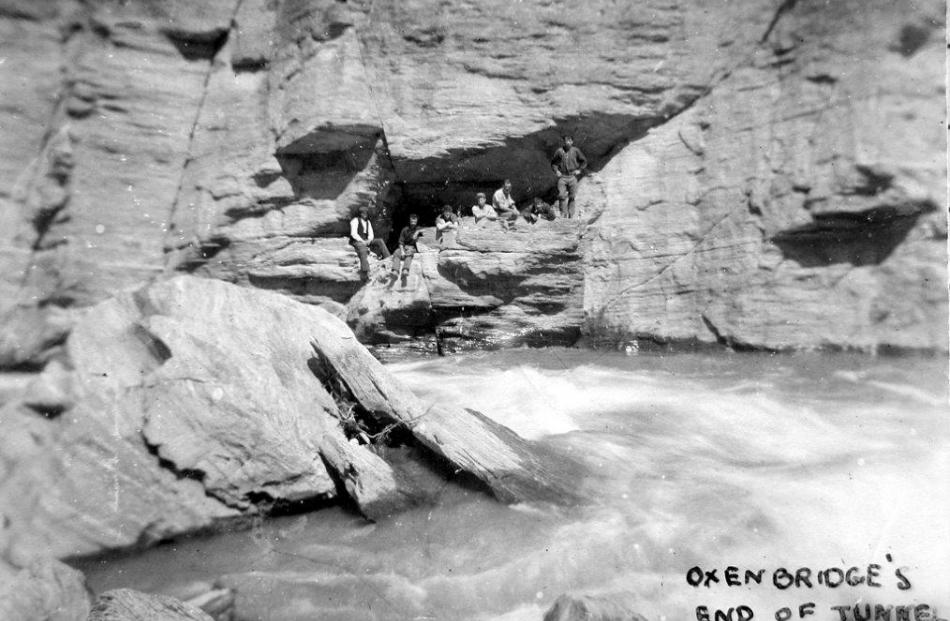Jet-boat driver Joseph Coutts struck gold while completing routine maintenance in the Shotover River. While moving rocks near the historic Oxenbridge Tunnel to clear Shotover Jet’s boat access, he scooped out an old mining relic from the riverbed that dates back to the early 1900s. Louise Scott unearths the story.
For more than 40 years an antique mining pump lay undisturbed at the bottom of the Shotover River.
That is until jet-boat driver Joseph Coutts stumbled across it when moving two-tonne rocks from the riverbed.
It isn’t known exactly when the pump met its watery end. One theory is it fell into the river when thieves tried to pinch it. A second is that it was washed away during a flood.
What is known is that it hadn’t been spotted in situ since about 1975.
Coutts says either way it’s great to unearth such an important piece of Queenstown’s goldmining history.
It was originally installed on bedrock, along with an engine, as part of an innovative project by the Oxenbridge brothers in the early 1900s.
They’d hoped to divert part of the river above Arthurs Point to reveal gold, but the high-cost initiative was unsuccessful and brought them little return.
Left on the river bank, the machinery became a tourist attraction, and punters taking a ride on the Shotover Jet were told about the engine and the tunnel.
Coutts reckoned it was fitting the discovery was made by a Shotover Jet staffer."That is where we end our trip, and we always talk about the Oxenbridge Tunnel and what it was. Effectively, it was a failure, but now we have another story. Before, we said: ‘The steam engine drove a pump we think and the pump would have been used to drain the river’.
"But now we can say: ‘The engine drove this pump, which we have recovered from the river’.
"It’s part of the Shotover Jet story. It’s really interesting."
Coutts and excavator driver Lester Kelly, from Base Contracting, were moving debris in mid-April when they made the find. The river was low and rocks were causing problems for jet-boats getting through.
Spotting something metallic, he initially thought it was a bit of old mining pipe. But when they started to pull it out, they realised it was much bigger.Coutts says it was like putting a jigsaw puzzle together.
"We thought it was the old pump that used to sit up on the rock, and figured out how it all worked, the mechanics.
"There are spigots [bolts] coming out of the pump and spigots coming out of the rock, so you can actually see where it sat.
"There’s also a channel in the rock which they carved out to drive the actual pump itself. [We] realised it was quite an important part of history."
The pair scooped out the relic, and Coutts got on the phone to Lakes District Museum boss David Clarke.
They needed to ascertain its condition and find out what restoration was needed.
Coutts contacted the Department of Conservation, who sent history expert Neville Ritchie to have a look. Local Doc boss Geoff Owen said its age and historic value meant it would need careful restoration.
He gave Shotover Jet a pat on the back for taking on the project.
The plan is to clean it up, build a platform to attach to, helicopter it back into place and add an information panel explaining its place in goldmining history.
Mr Clarke said the pump, which would have cost a whopping £600 back in the day, was a great discovery.
"The fact it’s been found still close by and is still in pretty complete condition is great news. Also the fact it’s going to be reinstated, along with the engine and interpretation panels, will continue to tell this story into the future."
The Oxenbridge family is stoked with the development.
Ken Turvey, who lives in Australia, is the great-grandson of Bert Oxenbridge, one of the family members behind the ambitious plan. The find had left members of the extended family very excited.
"All the relatives are over the moon that part of our history has been recovered. It’s a missing piece of New Zealand’s history."














